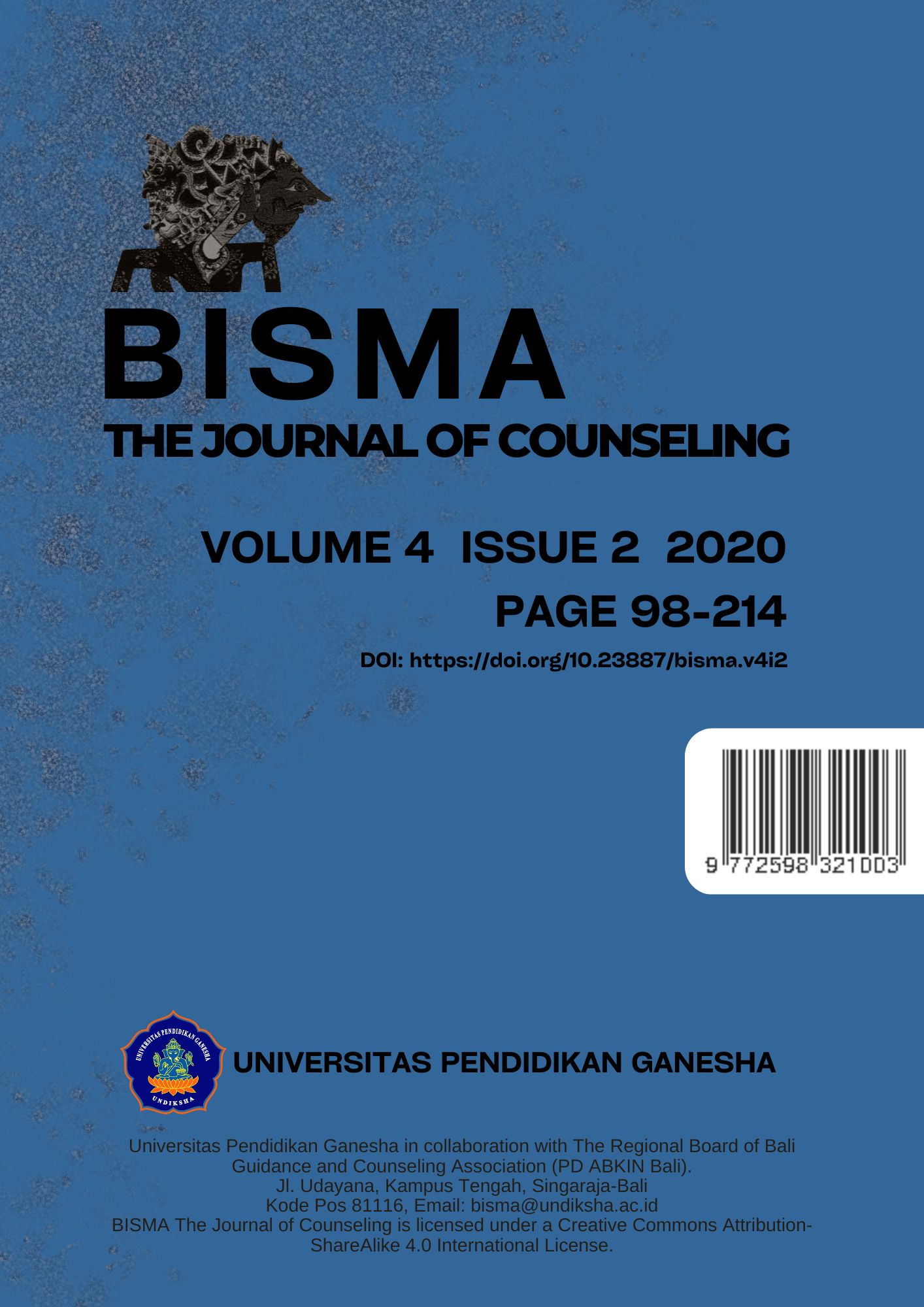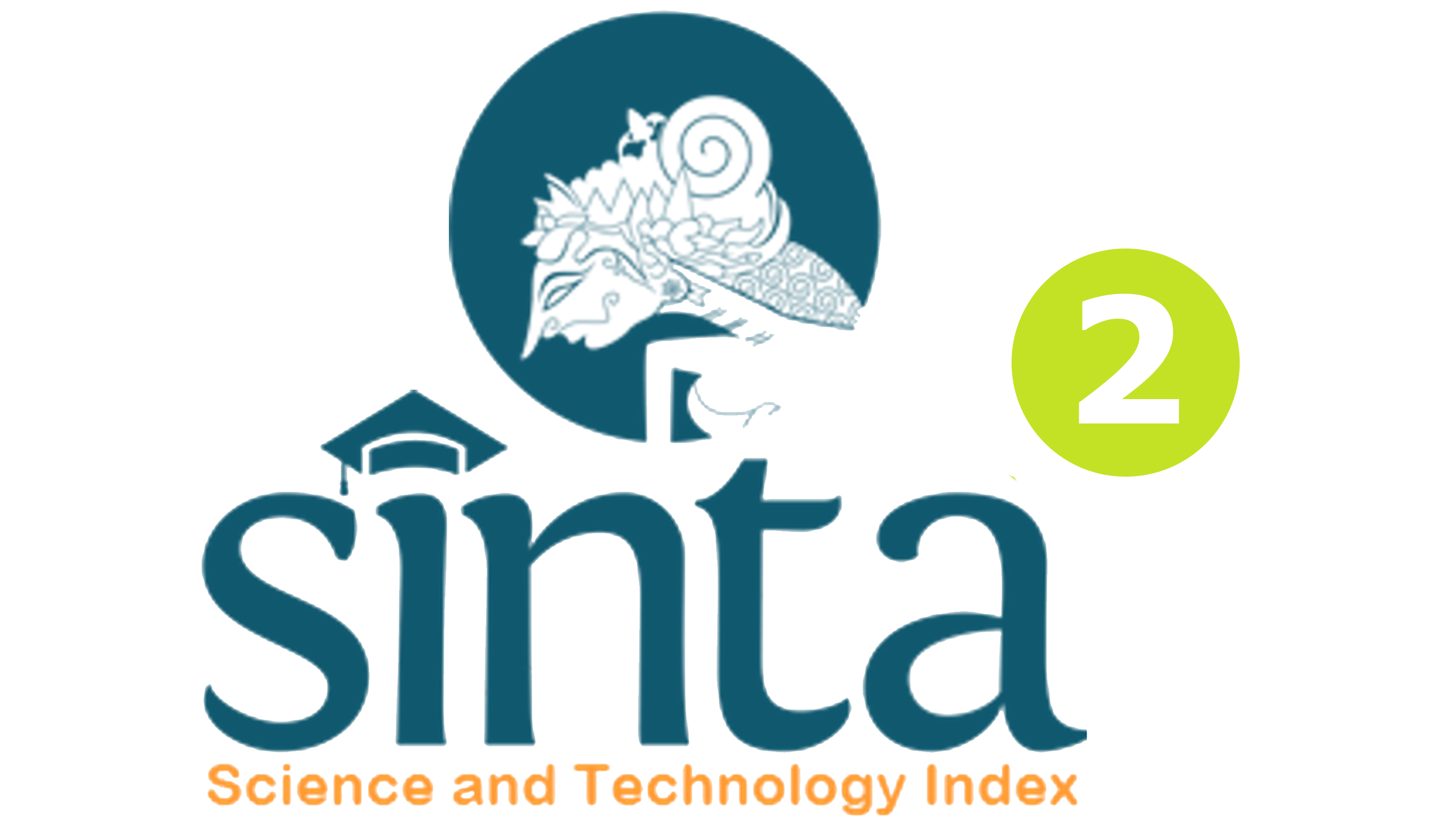Development of Achievement Motivation Instruments in High School Students
DOI:
https://doi.org/10.23887/bisma.v4i2.27912Keywords:
achievement motivation, instrument development, research and developmentAbstract
This study aims to describe the development of the Achievement Motivation in high school students. This research uses the Research & Development (R&D) method by using the 4D (four-D) model, define, design, develop, & disseminate. But in this study it was modified to 3D, which is define, design, and disseminate. Analysis of instrument validity using the formula CVR and CVI. Reliability test uses the Cronbach Alpha Formula. Based on the analysis it is known that there are 3 items that have a CVR value of 0.60 which are declared valid but need to be revised, and 57 items are declared valid. The instrument validity test results showed that CVI = 0.98 was declared special and the reliability of this instrument was 0.904 with a very high category.References
Adegboyega, L. O. (2018). Influence of achievement motivation on Nigerian undergraduates’ attitude towards examination. International Journal of Instruction, 11(1), 77–88. https://doi.org/10.12973/iji.2018.1116a
Affum-osei, E., Adom, E. A., Barnie, J., & Forkuoh, S. K. (2014). Achievement motivation, academic self-concept and academic achievement among high school students. European Journal of Research and Reflection in Educational Sciences, 2(2), 24–37.
Balogun, A. G., Balogun, S. K., & Onyencho, C. V. (2017). Test Anxiety and Academic Performance among Undergraduates: The Moderating Role of Achievement Motivation. Spanish Journal of Psychology, 20, 1–8. https://doi.org/10.1017/sjp.2017.5
Dwi Sanderayanti. (2015). Pengaruh Motivasi Berprestasi Dan Kemampuan Berpikir Kritis Terhadap Hasil Belajar Matematika Siswa Di Sdn Kota Depok. Jurnal Pendidikan Dasar, 6, 222–231.
Fakhria, M. (2019). Motivasi Berprestasi Siswa Ditinjau Dari Fasilitasi Sosial Dan Ketakutan Akan Kegagalan. Journal of Chemical Information and Modeling, 53(9), 1689–1699. https://doi.org/10.1017/CBO9781107415324.004
Ferrell, B., Phillips, M. M., & Barbera, J. (2016). Connecting achievement motivation to performance in general chemistry. Chemistry Education Research and Practice, 17(4), 1054–1066. https://doi.org/10.1039/c6rp00148c
Griadhi, M., Marhaeni, A., Suarni, N. K., & Sutajaya, I. M. (2018). DigitalCommons @ University of Nebraska - Lincoln QUALITY TOWARDS ACHIEVEMENT MOTIVATION AND LEARNING ACHIEVEMENT OF UNDIKSHA STUDENTS ON BALI-INDONESIA. (September).
Hasbullah, R., & Moeins, A. (2016). The Influnce of Professionalism, Achievement Motivation and Empowerment Against the Work Discipline and Its Implication on Teacher Performance. International Journal of Business and Commerce, 5(6), 18–36. Retrieved from http://www.ijbcnet.com/5-6/IJBC-16-5601.pdf
Karaman, M. A., & Watson, J. C. (2017). Examining associations among achievement motivation, locus of control, academic stress, and life satisfaction: A comparison of U.S. and international undergraduate students. Personality and Individual Differences, 111, 106–110. https://doi.org/10.1016/j.paid.2017.02.006
Lawshe, C. H. (1975). A Quantitative Approach To Content Validity. A Paper Presented at Content Validity, a Converence Held at Bowling Green. State Uneversity, 28(4), 563–575. https://doi.org/10.1111/j.1744-6570.1975.tb01393.x
Ling Majaya. (2015). Beda Pendidikan Jaman Dulu dan Jaman Sekarang. Retrieved from Kompasiana website: https://www.kompasiana.com/lingmajaya/551931c8a333112115b659a9/beda-pendidikan-jaman-dulu-dan-jaman-sekarang
Manafi, D., Movahhed, H., & Hejazi, Y. (2016). Analyzing the Role of Self-Esteem Dimensions in Student’s Achievement Motivation (A Case of M.Sc. Students of Agriculture in Tehran University). International Journal of Agricultural Management and Development, 6(3), 319–325. https://doi.org/10.22004/ag.econ.262598
Michou, A., Matos, L., Gargurevich, R., Gumus, B., & Herrera, D. (2016). Building on the enriched hierarchical model of achievement motivation: Autonomous and controlling reasons underlying mastery goals. Psychologica Belgica, 56(3), 269–287. https://doi.org/10.5334/pb.281
Permana, A. H., Muliyati, D., Bakri, F., Dewi, B. P., & Ambarwulan, D. (2019). The development of an electricity book based on augmented reality technologies. Journal of Physics: Conference Series, 1157(3). https://doi.org/10.1088/1742-6596/1157/3/032027
Renata, Wardiah, D., & Kristiawan, M. (2018). The influence of headmaster’s supervision and achievement motivation on effective teachers. International Journal of Scientific and Technology Research, 7(6), 44–49.
Saeid, N., & Eslaminejad, T. (2016). Relationship between Student’s Self-Directed-Learning Readiness and Academic Self-Efficacy and Achievement Motivation in Students. International Education Studies, 10(1), 225. https://doi.org/10.5539/ies.v10n1p225
Sarangi, C. (2015). Achievement Motivation of the High School Students : a Case Study Among Different Communities of Goalpara District of Assam. Journal of Education and Practice, 6(19), 140–145.
Smith, R. L. (2015). A Contextual Measure of Achievement Motivation : Significance for Research in Counseling. VISTAS Online, 1(14), 1–11. https://doi.org/10.1038/nature04971
Smith, R. L., Karaman, M. A., Balkin, R. S., & Talwar, S. (2020). Psychometric properties and factor analyses of the achievement motivation measure. British Journal of Guidance and Counselling, 48(3), 418–429. https://doi.org/10.1080/03069885.2019.1620173
Suarni, N. K., & Martaniah, P. P. D. S. M. (2004). Meningkatkan motivasi berprestasi siswa Sekolah Menengah Umum di Bali dengan strategi pengelolaan diri model Yates:: Studi kuasi eksperimentasl pada siswa kelas I SMU di Bali.
Sugiyono, S. (2015). Metode penelitian pendidikan pendekatan kuantitatif, dan R&D. Alfabeta Bandung.
Thiagarajan, S. O. (1974). Instructional development for training teachers of exceptional children: A sourcebook. Journal of School Psychology, 14(1), 75. https://doi.org/10.1016/0022-4405(76)90066-2
Toding, W. R. B., David, L., & Pali, C. (2015). Hubungan Dukungan Sosial Dengan Motivasi Berprestasi Pada Mahasiswa Angkatan 2013 Fakultas Kedokteran Universitas Sam Ratulangi. Jurnal E-Biomedik, 3(1). https://doi.org/10.35790/ebm.3.1.2015.6619
Zhang, Z.-J., Zhang, C.-L., Zhang, X.-G., Liu, X.-M., Zhang, H., Wang, J., & Liu, S. (2015). Relationship between self-efficacy beliefs and achievement motivation in student nurses. Chinese Nursing Research, 2(2–3), 67–70. https://doi.org/10.1016/j.cnre.2015.06.001









